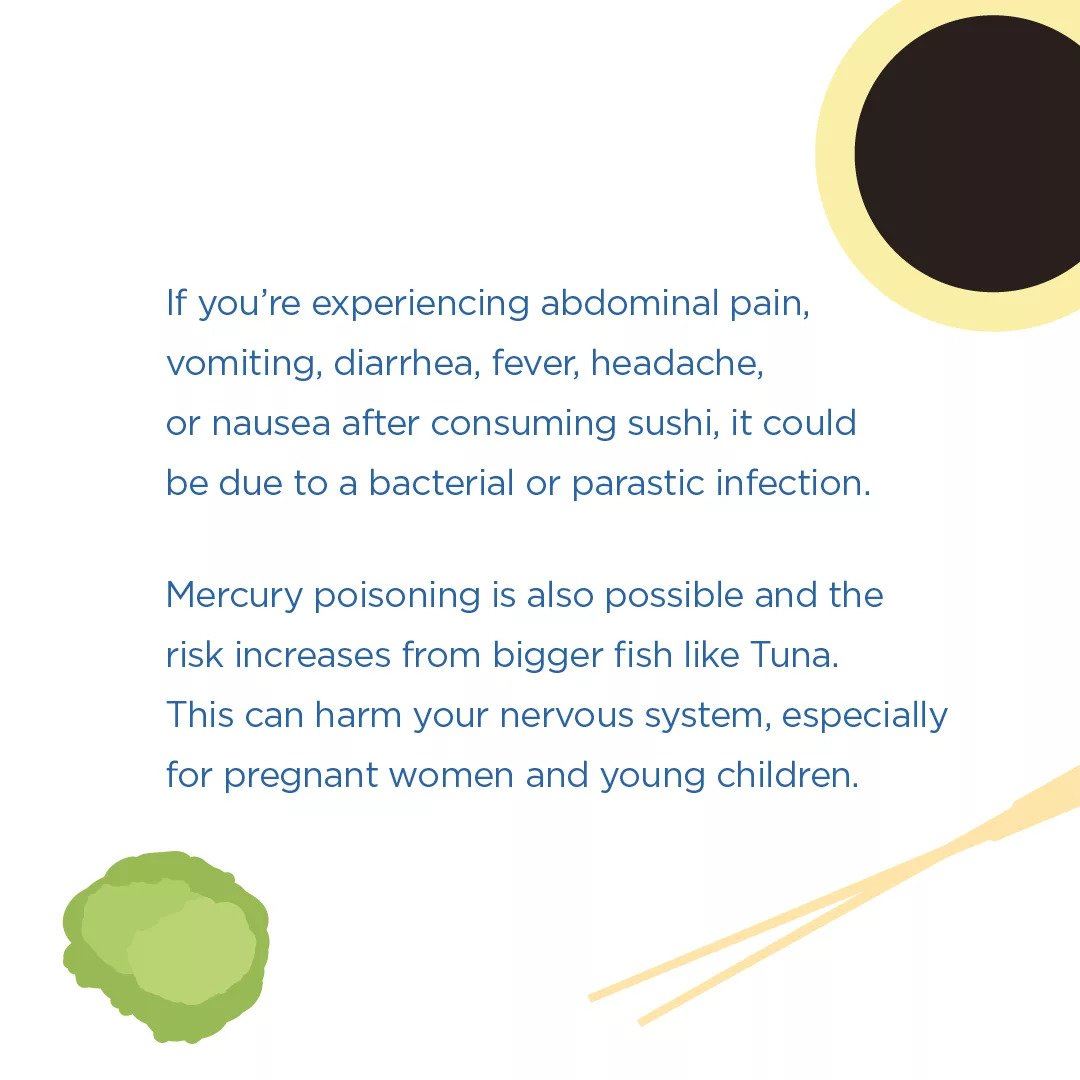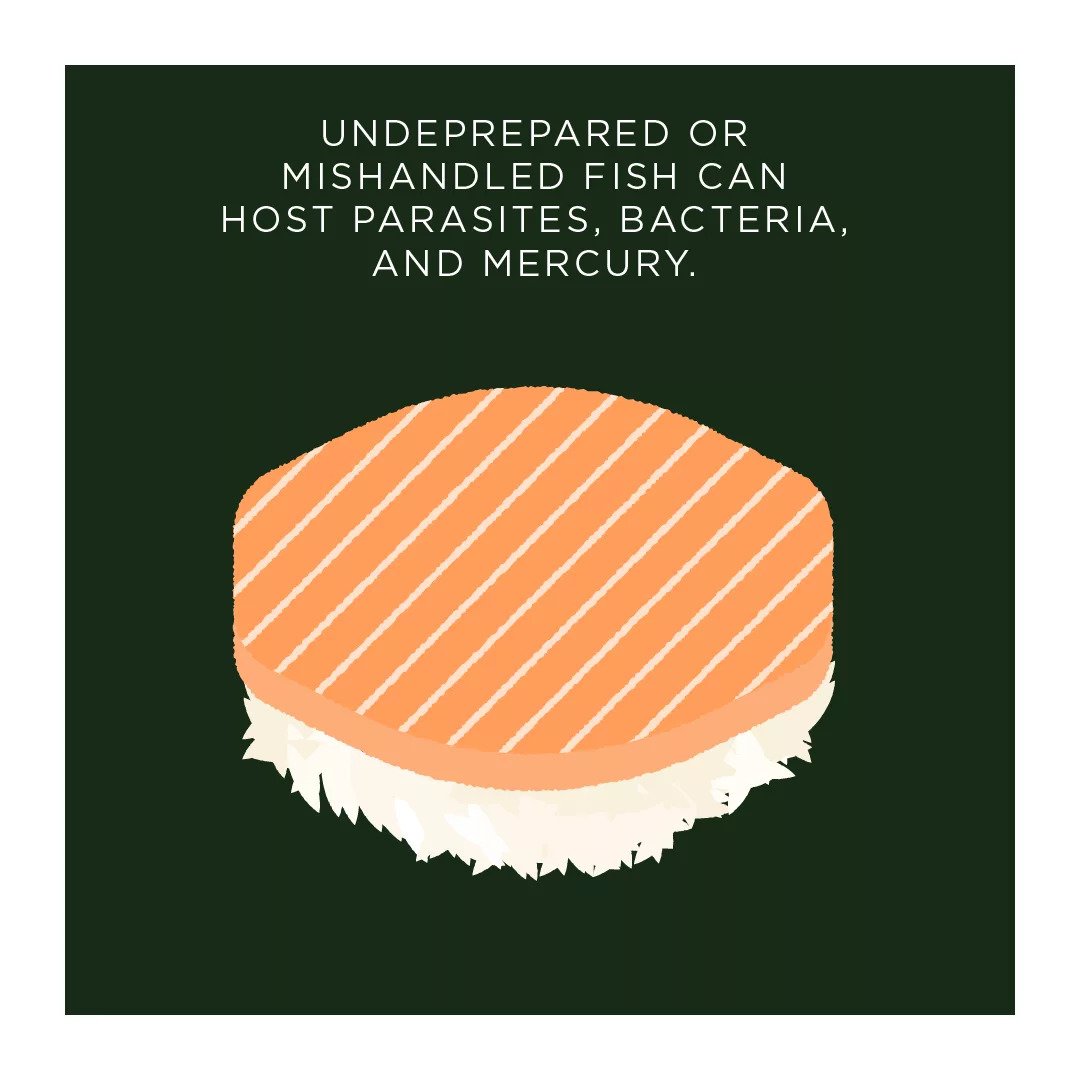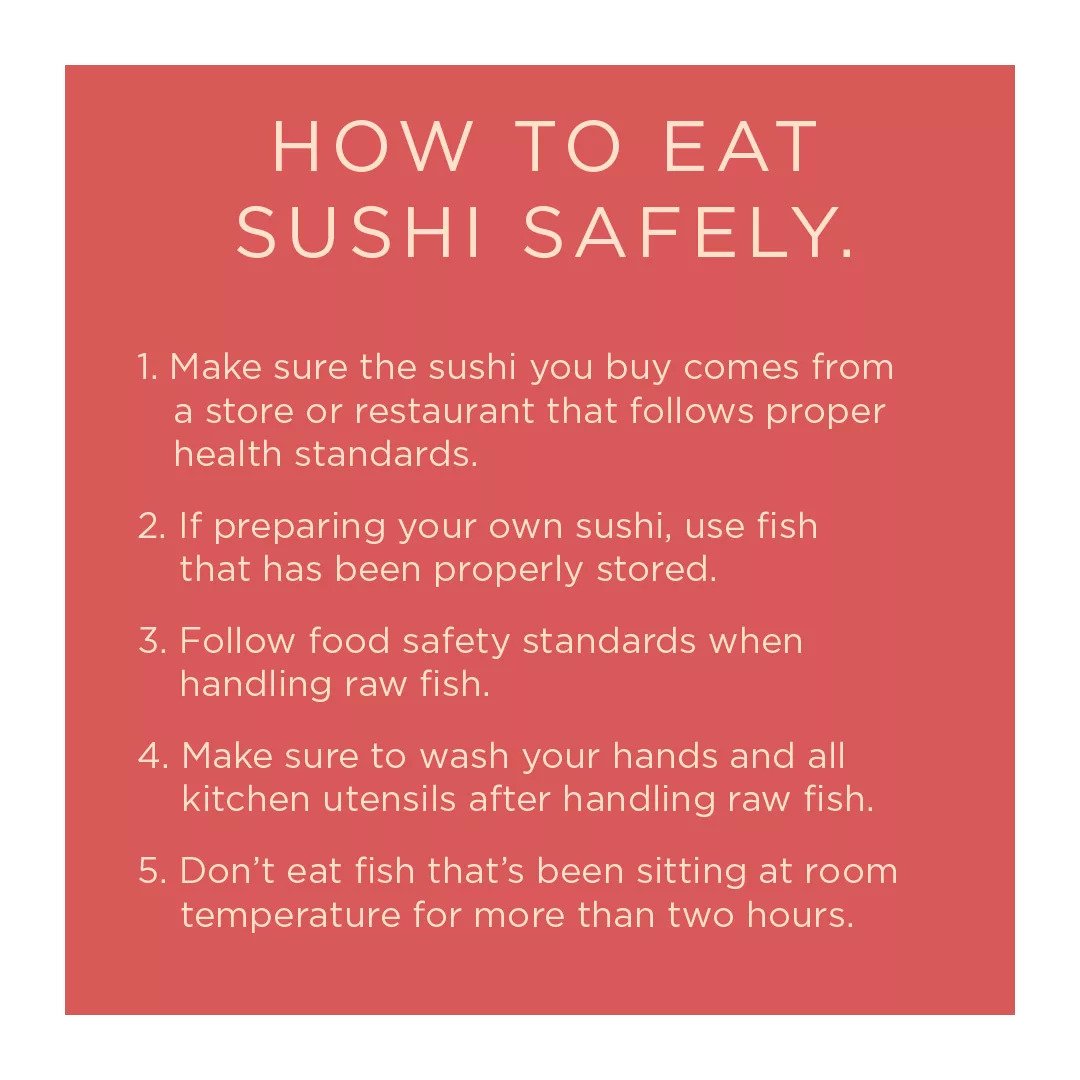Sushi Made You Sick? Here’s How To Enjoy It Safely. — Premier
- Category: Symptoms
- Posted On:

WHEN A FOODBORNE ILLNESS IS LINKED TO SUSHI, THE CULPRITS ARE USUALLY RAW FISH THAT CONTAINS PARASITES OR BACTERIA.
We've all heard tales of friends or acquaintances who have fallen ill after eating at sushi restaurants. It's not a good feeling, and it can be alarming to think about what exactly caused the sickness—and whether it could happen to you.

The short answer is that foodborne illness happens when pathogens—or microscopic organisms like viruses, bacteria, and parasites—enter your body through food or contaminated water. The most common symptoms include vomiting, diarrhea, abdominal pain, and fever. But in some cases, these infections may lead to more severe health issues like dehydration, arthritis, and even death (especially among young children).
Foodborne illnesses are usually easy to pinpoint. Your doctor might recommend a stool sample test if you are experiencing symptoms of a foodborne illness. In many cases, the culprits are raw fish that contains parasites or bacteria like salmonella or listeria. That's why handling and preparing fish is so important: it needs to be refrigerated within two hours of being caught to kill any potential bacteria growth. Refrigerating fish properly is also critical once the sushi has been made: at home or in a restaurant.
SUSHI CAN CAUSE FOOD POISONING IF IT IS NOT PREPARED CAREFULLY.
Sushi can cause food poisoning if it is not prepared carefully. Food poisoning can result in complications and even death. If you think your sushi is spoiled, the symptoms of food poisoning can include -
- nausea
- vomiting
- diarrhea
- fever
- abdominal pain.
Once you eat bad sushi or sashimi, it will take 6-24 hours for the symptoms to appear. And it can take up to 72 hours for the symptoms to disappear and heal completely. If your sushi-related sickness persists after two days, you should seek medical care immediately.

ALWAYS CONSUME RAW SEAFOOD WITHIN TWO DAYS OF PURCHASE TO REDUCE THE CHANCE THAT IT WILL MAKE YOU SICK.
As with many food products, raw seafood is more likely to contain pathogens such as parasites and bacteria when it is not fresh. The general rule of thumb for consuming raw seafood is that it should be eaten within two days of purchase. Following this rule will drastically reduce the likelihood of becoming ill from consumption.
Beyond going bad, fish can also accumulate contaminants like mercury, which can seriously impact your health if consumed in large quantities over time. These pollutants are typically concentrated in larger fish so large predators (e.g., sharks) and long-lived fish (e.g., swordfish) should be avoided.
CLEAN YOUR KITCHEN THOROUGHLY BEFORE PREPARING SUSHI SO THERE'S NO RISK OF CROSS-CONTAMINATION FROM OTHER FOODS.
When preparing for a fun evening of sushi making and consumption, please keep in mind the following tips to ensure that no illness occurs:
- Clean kitchen surfaces thoroughly with hot soapy water.
- Use a separate cutting board for raw meat/seafood and other foods like vegetables.
- Wash your hands often when preparing food and after handling raw fish.
- Separate your raw meat from cooked, ready-to-eat foods. Raw meat is more likely to harbor pathogens than cooked food is.
- Thoroughly wash raw meat before cooking it.
KNOWING THE RISKS AND HOW TO PREPARE SUSHI SAFELY WILL HELP KEEP YOU FROM GETTING SICK FROM EATING IT.
You can reduce the risk of becoming sick by taking these precautions:

Know the risks
Seafood that is improperly prepared or handled can cause food poisoning. So, it's essential to know and understand the risks involved when eating sushi.
Avoid raw fish that has not been frozen
A good rule of thumb is to only eat sushi from a place you trust, where you know the fish is fresh. And if you are unsure about which kinds of fish have been frozen, ask your server for more information. They will be able to tell you which fish on their menu is safe to eat and which ones to avoid if raw.
Be careful when preparing your sushi at home
When working with raw seafood, it's essential to make sure all utensils and cutting boards that come into contact with the food have been sanitized first and are completely clean before being used again for another dish or food item. Use separate knives for meat preparation (to avoid cross-contamination). Be aware that there may still be some residual bacteria present even after washing all surfaces thoroughly. Do not let them sit out longer than necessary while waiting on other foods items like rice noodles, etc.
